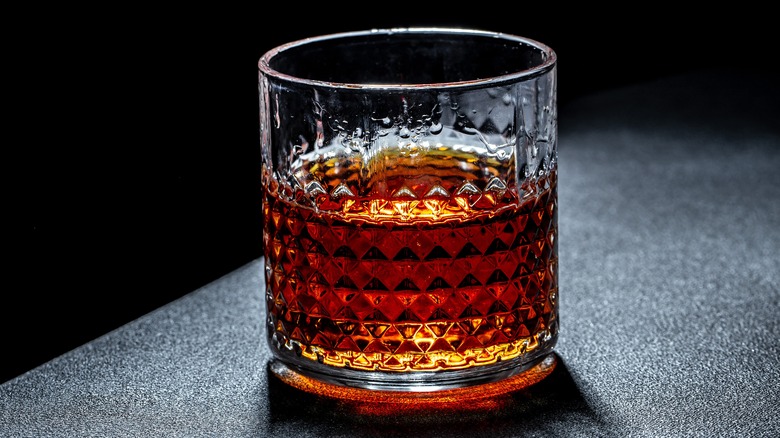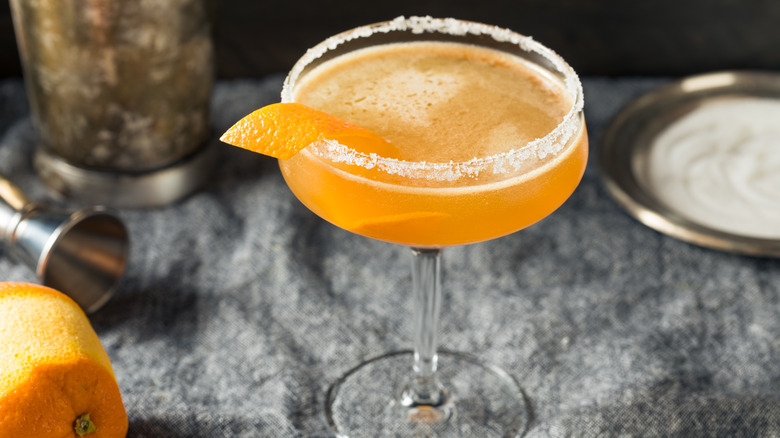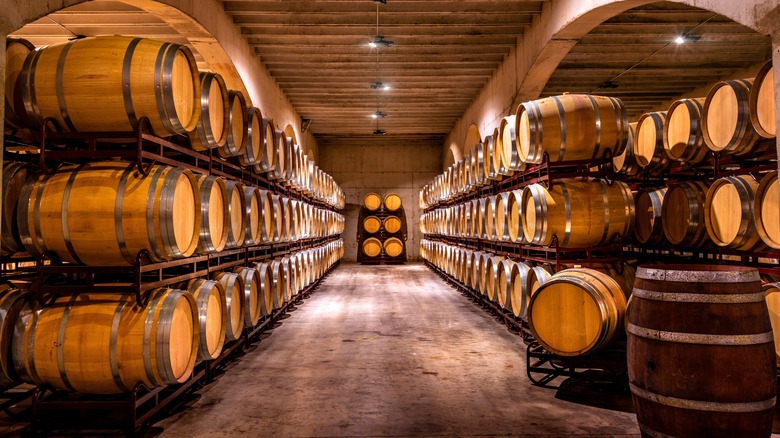How To Drink Brandy Like A Liquor Connoisseur
When push comes to shove, most of us submit to ordering something simple at the bar, like a pint of beer or a vodka soda. While a spirit like brandy may seem better left for those who tinker with potions at fancy craft cocktail bars, it's far more approachable than it seems at first glance. (Brandy was actually invented by accident, so, all in all, it seems pretty casual.) While it can easily be incorporated into your repertoire, Charles, founder of Ur Friend Charles, has some tips to help you get the most out of your brandy-sipping experience.
Oftentimes, libations are served in the glass that best accentuates the drinks' aroma. Cognac — a specific type of aged brandy — is typically served in a tulip glass, as the narrow mouth acts like a channel for the oaky scent. "Unlike its snooty cousin Cognac, brandy is less pretentious and more versatile," Charles explained in an exclusive interview with Mashed, adding, "The best glass for serving brandy is the one you have." However, because brandy is made from distilled wine, it has a sweet, jammy flavor with a mighty punch and killer aromatics. "Personally, I favor a rocks glass or any glass with a wide enough mouth to fully appreciate the aromas," Charles said.
Brandy: the every man's drink
Perhaps more important than the glass brandy is served in is the manner in which it is served. In some cases, ice and other additives enhance the flavor and drinkability of a spirit. When it comes to brandy, Charles told us, "Ideally, room temperature is perfect for those who appreciate its full flavor." Still, if you like a few ice cubes in your sipper, the content creator behind the @urfriendcharles Instagram says there's nothing wrong with that. "Adding a bit of ice can soften some of the harsher notes and dilute the flavor slightly, which some people prefer," he suggested.
If straight booze is just never going to be your thing, brandy is delicious as the base of several cocktails. "The traditional sidecar is my top pick for a brandy cocktail due to its simplicity and elegance," Charles said, referencing the 100+ year-old cocktail made with lemon, brandy, orange liqueur, and a sugar rim. Alternatively, he recommends trying brandy in any number of other classic cocktails, including an old fashioned, a margarita, or a hot toddy (made with limoncello, if you want a hot toddy like Giada de Laurentiis').
Aged like a fine wine
For those not yet well-versed in the world of brandy, ordering a glass at a bar feels like a totally different beast than picking out a bottle for home. One of the most important things to consider is the age of the bottle. Like bourbon, brandy must be aged in barrels for a minimum of two years, allowing it to soften and take on some of the barrel's woody qualities. "When purchasing brandy, look for labels indicating aging grades like VS (Very Special, aged at least two years), VSOP (Very Superior Old Pale, at least four years), and XO (Extra Old, at least six years), which is typically the highest grade you'll see in America," Charles explained. If you ever see a bottle labeled as "Hors d'age," he says that bottle has been aged for upwards of 10 years.
According to Charles, adventuring beyond recognizable name brands and trying a bottle based on a connection you feel to the maker's story is also a fun way to become more acquainted with brandy. His rule of thumb: "Generally, avoid brands on the bottom shelf or those in plastic bottles, but be open to discovering new options." To make your exploration easier, we've detailed several types of brandy and what makes them unique. Once you've got your bottle home, Charles suggests storing the bottle in a cool, dark place straight away, as leaving it out can increase its exposure to oxygen, which will ultimately affect the flavor.


